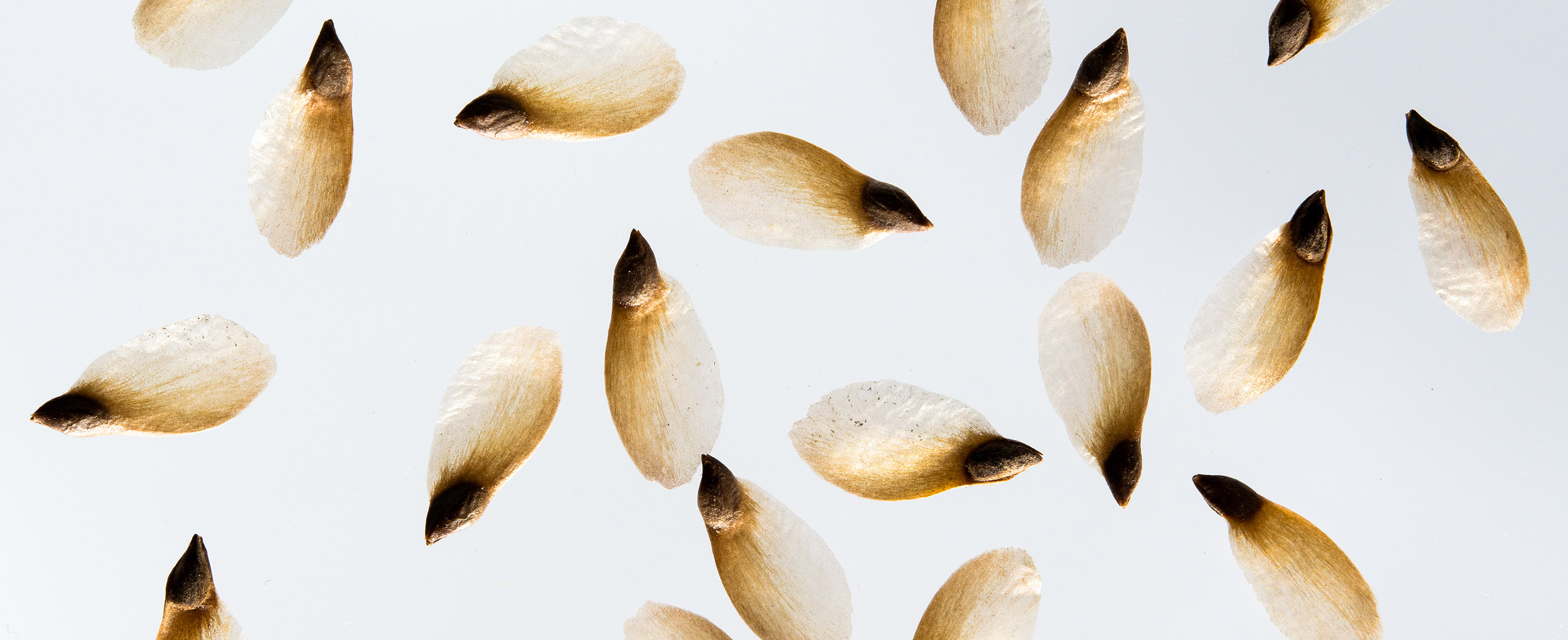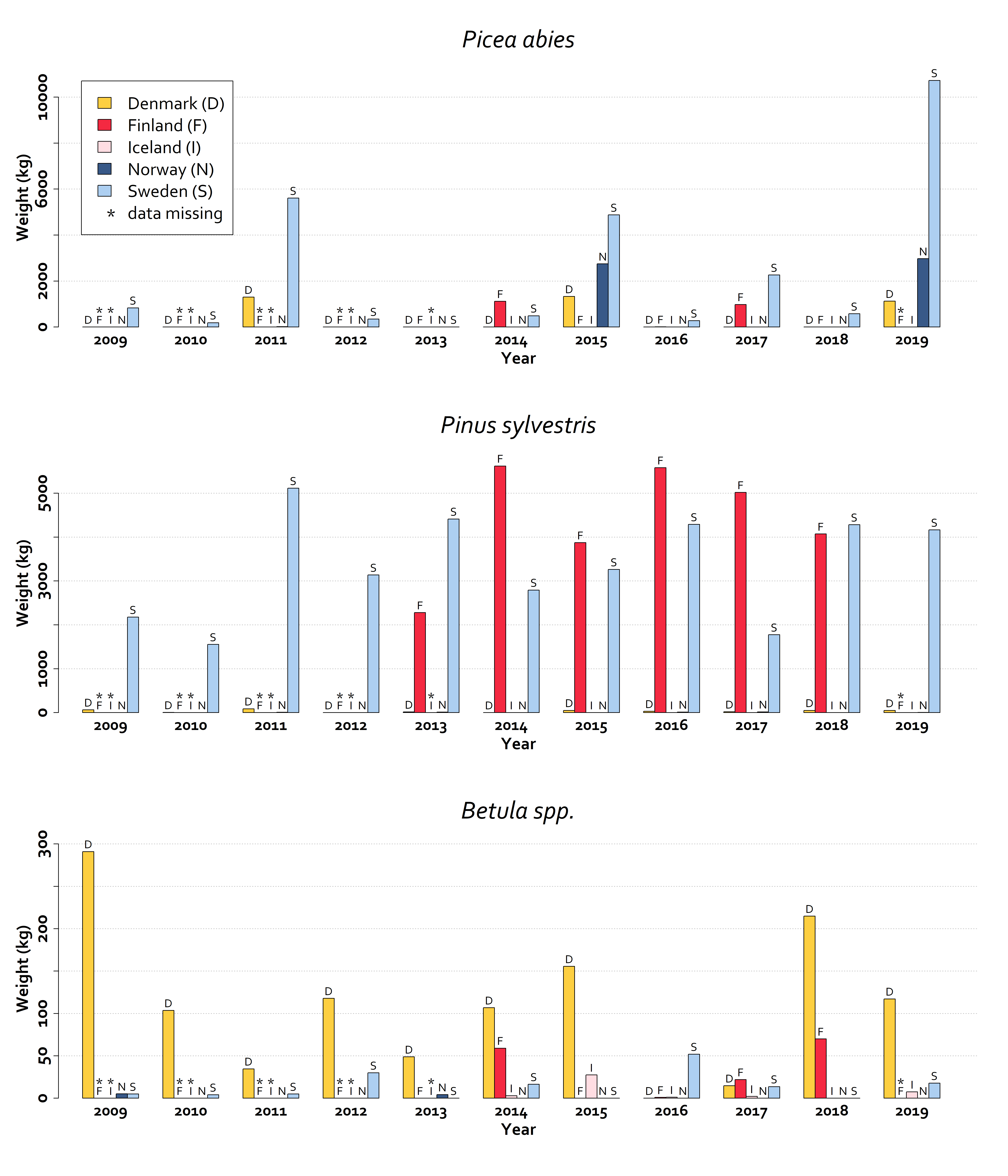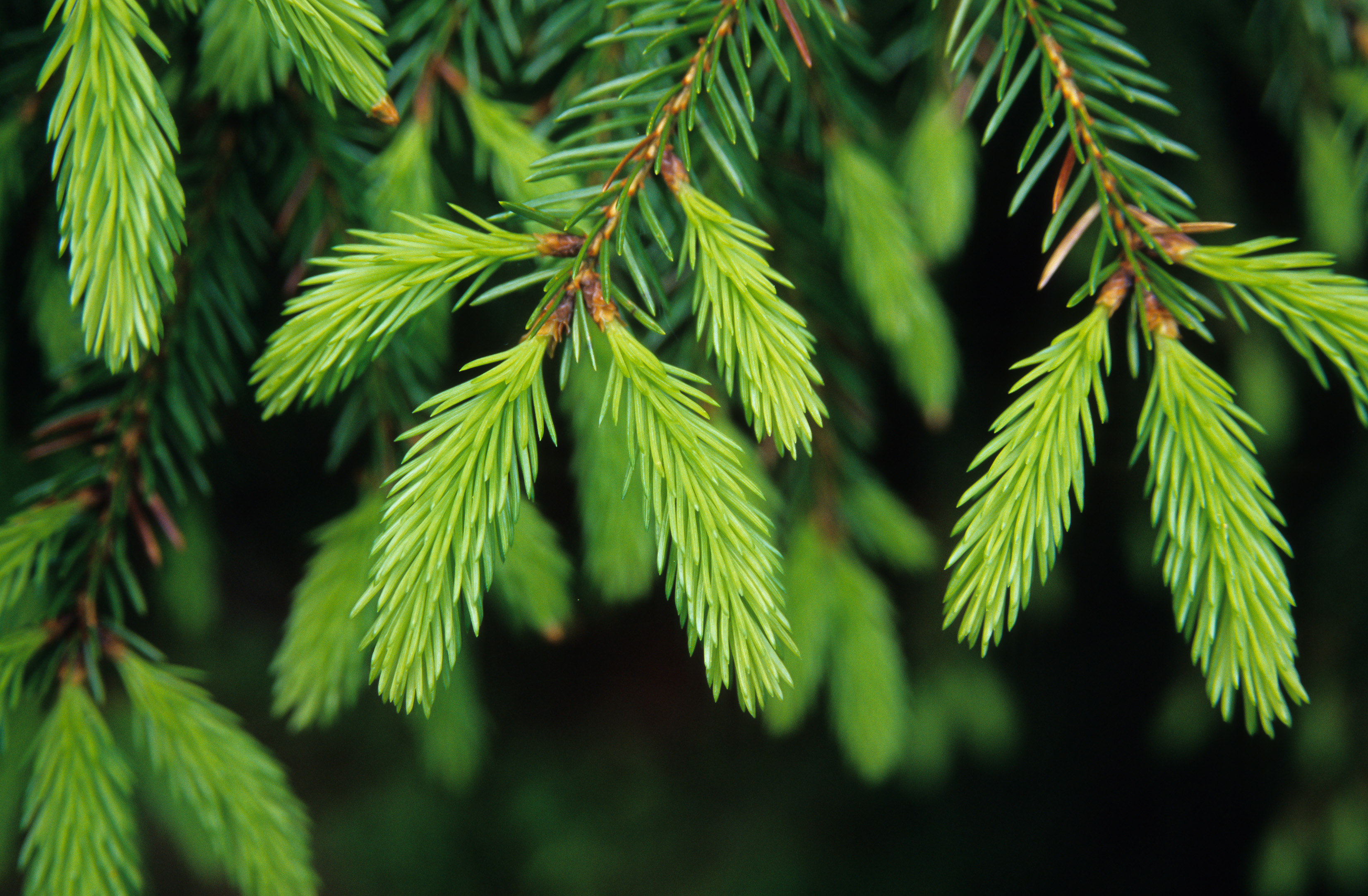
Seed Production in the Nordic Countries
The seed production for Norway spruce (Picea abies), Scots pine (Pinus sylvestris) and birch (Betula spp.) is presented for the years 2009-2019 (Figure 5).
Top photo: Spruce seeds, Dan Aamlid/NIBIO.

Norway spruce does not produce seeds every year, and every now and then there is a substantial seed production in good seed years. Seed production is more frequent in Scots pine (Figure 5).
In Norway, the price of improved seed orchard seed was raised by 50% in 2016, based on the inclusion of a breeding fee. As mentioned above in chapter Seedlings, political will caused a demand for both seedlings and seed, and the sale of spruce seeds increased strongly in 2016 and the proportion of sold seeds from seed orchards increased to 90% in 2017.
For spruce in Finland, there was a poor seed ripening in autumn 2013. There was a good crop of Norway spruce in 2012. The last good crop before that was in 2006. Due to an exceptionally large crop of Betula pendula in 2012, no seed was harvested in 2013. The 2012 crop of birch was the largest in 30 years. There was a drop in the proportion of birch seeds produced in seed orchards in 2016, and storages of such seeds were almost empty. There was a poor seed crop of Norway spruce in 2016.
In Sweden the production of Norway spruce seed in 2015 was good, whereas in 2016 it did not meet the demand. Seed production of Scots pine was normal in 2015 and 2016.
In Denmark a large harvest of Fagus sylvatica was obtained in 2009 and 2019, and there was a normal harvest in 2011. The danish seed orchards of Abies nordmanniana contributes increasingly to the seed supply. Good quantities were obtained in 2009, 2014 and 2019.
Figure 5
Seed production for Norway spruce (Picea abies), Scots pine (Pinus sylvestris) and birch (Betula spp.) in countries and years (year of ripening/harvest). Data were not available for Finland in 2019 and before 2013, and for Iceland before 2014. When comparing these species by mass seed production it is worth noting that birch seeds weigh considerably less than seeds of spruce and pine (e.g. around 1/10).


Seed Quality
All seeds produced in the EU must come from officially approved and registered basic material, such as seed orchards or seed stands. A Master Certificate is issued to each seed lot after collection and is required for marketing forest reproductive material. It assures that seeds are collected from an approved basic material and include information on the type of basic material, phenotypic and genetic quality and origin of the material. Forest reproductive material coming from countries outside the EU may be imported to and marketed in the EU if it affords the same assurances as the material produced in the EU, based on the OECD Certificate of Identity or Certificate of Provenance.